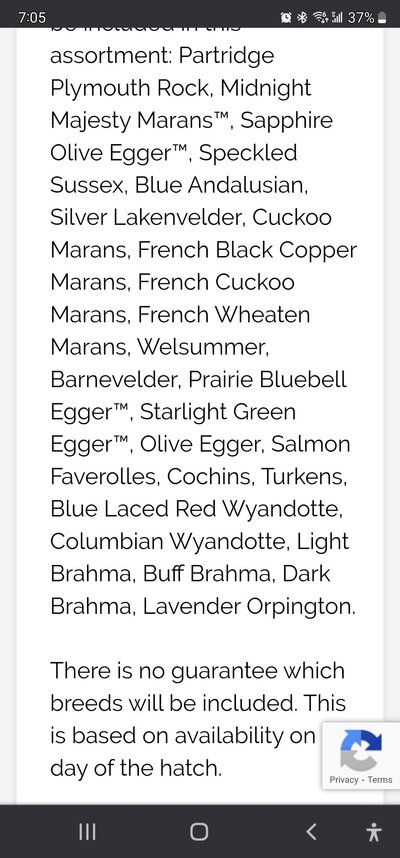Plymouth Rock is a breed that comes in several colors: white, barred, buff, partridge, and several others. The barred ones (black with white lines across the feathers) seem to be the best-known color of that breed.I searched and searched for your middle one.and feom what I gather from the identifier app and hoovers page I wanna say a Plymouth Rock. I'm probably really wrong though. The identifier doesn't give the mixed brreeds.
None of those chicks is a Barred Plymouth Rock. The chick colors & patterns are wrong. Also, in the photos with some feathers coming in, none of them are right for a Barred Rock chick. A Barred Rock would have black feathers with white lines across them, on a chick with lots of black down and some yellow down in specific places.




